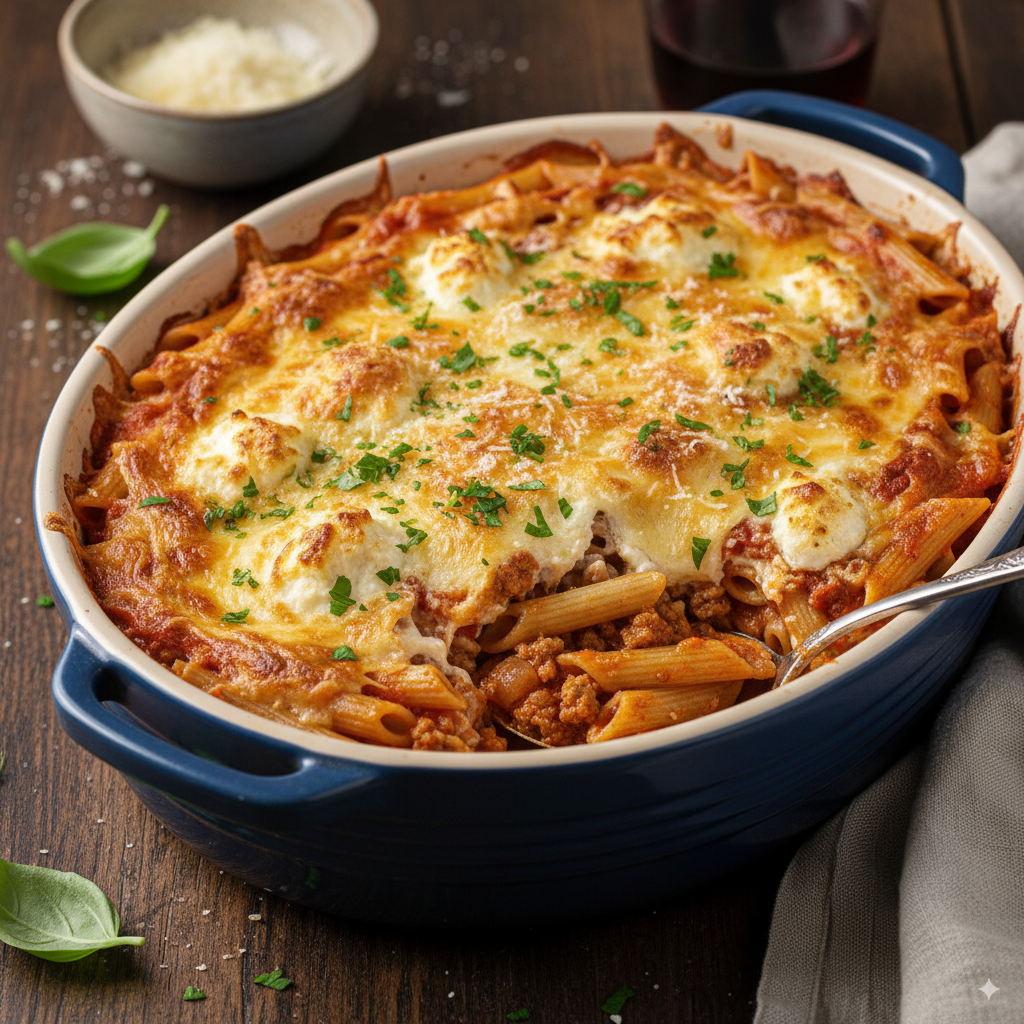If you’re craving comfort food that’s hearty, healthy, and satisfying, this Ricotta and Vegetable Lasagna is the perfect recipe for you. Layered with tender pasta sheets, creamy ricotta cheese, colorful vegetables, and rich marinara sauce, this dish proves that lasagna doesn’t always need meat to be filling and delicious. Whether you’re a vegetarian or simply looking for a lighter alternative to traditional beef lasagna, this recipe is a wholesome crowd-pleaser.
Lasagna is one of those meals that feels like home. It’s cozy, warm, and perfect for family dinners or entertaining guests. The beauty of a vegetable lasagna is that it combines the richness of Italian flavors with the goodness of fresh vegetables, making it both indulgent and nutritious. By using ricotta cheese as the creamy base and layering in zucchini, spinach, mushrooms, and bell peppers, you get a well-balanced dish that delivers both taste and health benefits.
Why You’ll Love This Ricotta and Vegetable Lasagna
- Vegetarian-Friendly: Perfect for those who want a meatless but hearty meal.
- Packed with Flavor: Layers of cheese, veggies, herbs, and marinara sauce create depth in every bite.
- Nutritious: Loaded with fiber, vitamins, and minerals from fresh vegetables.
- Meal Prep Friendly: Stores well in the fridge or freezer, making it great for batch cooking.
- Comfort Food with a Healthy Twist: All the satisfaction of traditional lasagna but with a lighter, veggie-forward profile.
Ingredients and Substitutions

Here’s what you’ll need to make the perfect Ricotta and Vegetable Lasagna, along with easy substitutions:
Lasagna Noodles
You can use traditional lasagna sheets or no-boil noodles for convenience. Whole wheat pasta works if you want extra fiber, and gluten-free lasagna noodles are a great option for those with sensitivities.
Ricotta Cheese
Creamy ricotta is the star of the cheese filling. For a lighter option, use part-skim ricotta. Cottage cheese can be substituted, though it will have a slightly different texture.
Vegetables
This recipe includes zucchini, mushrooms, spinach, and bell peppers. You can also add eggplant, kale, carrots, or broccoli depending on your preference.
Marinara Sauce
A high-quality store-bought marinara saves time, but you can also make homemade tomato sauce with fresh garlic, onions, and Italian herbs.
Also Read : Peanut Chicken Bowls
Mozzarella Cheese
Freshly shredded mozzarella melts beautifully and adds gooey texture. For a richer taste, combine with provolone.
Parmesan Cheese
Grated Parmesan provides a salty, nutty flavor that completes the dish. Pecorino Romano is a good substitute.
Seasonings
Garlic, oregano, basil, red pepper flakes, salt, and black pepper bring Italian authenticity. Fresh basil leaves add freshness to the final layers.
How to Make Ricotta and Vegetable Lasagna
- Cook the Noodles: Boil lasagna noodles until al dente. Drain and set aside. If using no-boil noodles, skip this step.
- Prepare the Vegetables: Sauté mushrooms, zucchini, bell peppers, and spinach in olive oil with garlic until softened. Season with salt, pepper, and oregano.
- Make the Ricotta Filling: In a bowl, mix ricotta cheese, an egg, Parmesan, and chopped parsley until creamy.
- Assemble the Layers: Spread a thin layer of marinara sauce in a baking dish. Add noodles, ricotta mixture, sautéed vegetables, mozzarella, and sauce. Repeat until all ingredients are used. Top with mozzarella and Parmesan.
- Bake: Cover with foil and bake at 375°F (190°C) for 30 minutes. Remove foil and bake for another 10–15 minutes until cheese is golden and bubbling.
- Rest and Serve: Let the lasagna rest for 10 minutes before slicing for clean layers. Garnish with fresh basil.
Nutrition Benefits of Vegetable Lasagna
- High in Fiber: Vegetables like zucchini, spinach, and mushrooms promote digestion and satiety.
- Protein-Rich: Ricotta and mozzarella provide high-quality protein for muscle repair and energy.
- Calcium Boost: Cheese adds a good dose of calcium for bone health.
- Balanced Meal: With carbs from pasta, protein from cheese, and micronutrients from veggies, it’s a complete dish.
Variations and Adaptations
- Low-Carb Option: Replace noodles with zucchini or eggplant slices for a veggie lasagna.
- Vegan Version: Use tofu ricotta and vegan mozzarella/Parmesan.
- Gluten-Free: Use gluten-free lasagna sheets.
- Extra Protein: Add lentils or chickpeas to the marinara sauce for more plant-based protein.
- Spicy Twist: Add red pepper flakes or a layer of spicy arrabbiata sauce.
Storage and Meal Prep
- Refrigerate: Store cooled lasagna in an airtight container for up to 4 days.
- Freeze: Cut into portions, wrap tightly, and freeze for up to 3 months. Thaw overnight before reheating.
- Reheat: Warm in the oven at 350°F (175°C) for 15–20 minutes or microwave individual slices for 2–3 minutes.
Tips for the Best Vegetable Lasagna
- Drain the Veggies Well: Too much water from vegetables can make the lasagna soggy. Cook them until moisture evaporates.
- Use Fresh Herbs: Basil and parsley elevate the flavor profile.
- Shred Cheese Fresh: Pre-shredded cheese doesn’t melt as well due to added starch.
- Let It Rest: Allowing the lasagna to cool slightly helps it set and makes slicing easier.
- Bake Covered First: Foil helps the lasagna cook evenly without burning the cheese on top.
Serving Suggestions
Ricotta and Vegetable Lasagna is a complete meal on its own, but you can pair it with:
- A simple green salad with balsamic vinaigrette
- Garlic bread or focaccia
- Roasted vegetables like broccoli or asparagus
- A glass of red wine such as Chianti or Merlot for a true Italian dining experience


Pingback: Tzatziki Recipe – The Cool & Creamy Greek Dip Americans Love